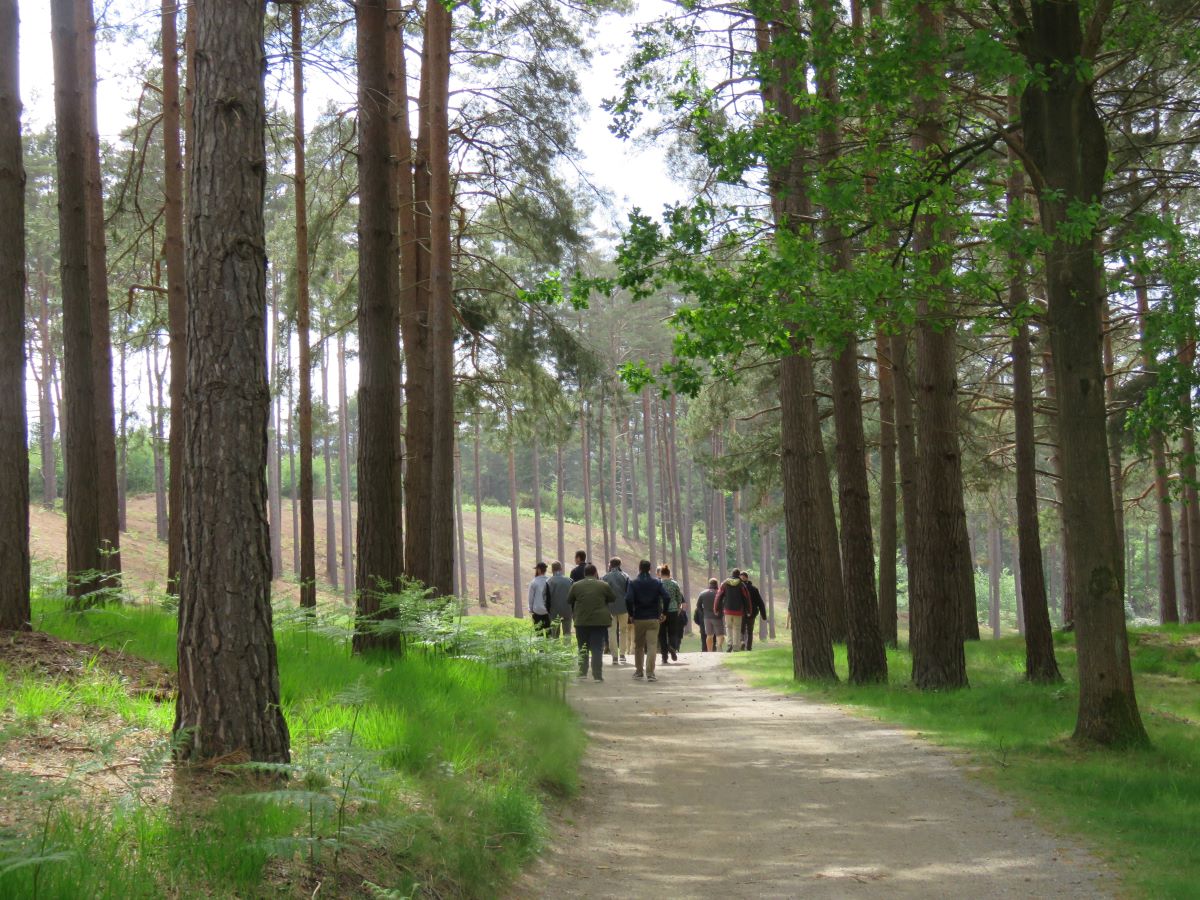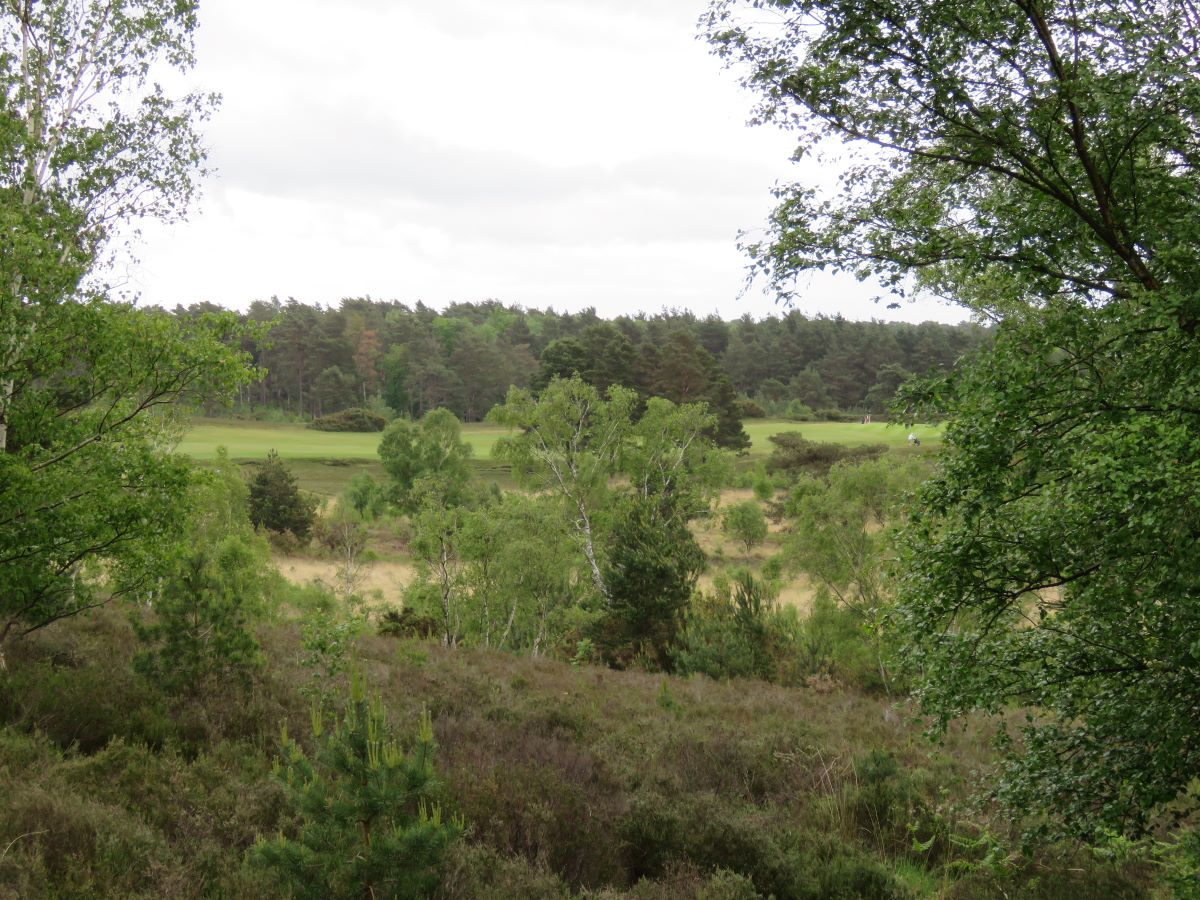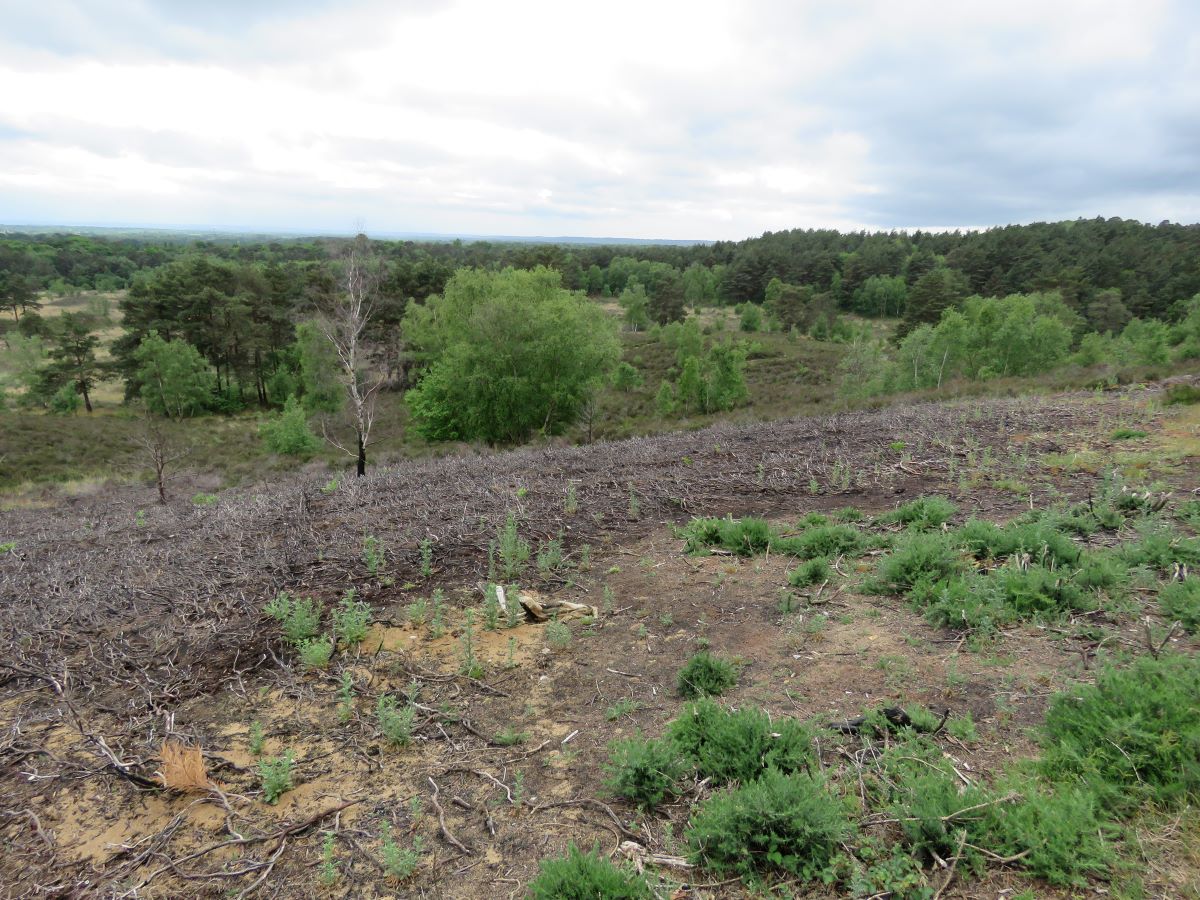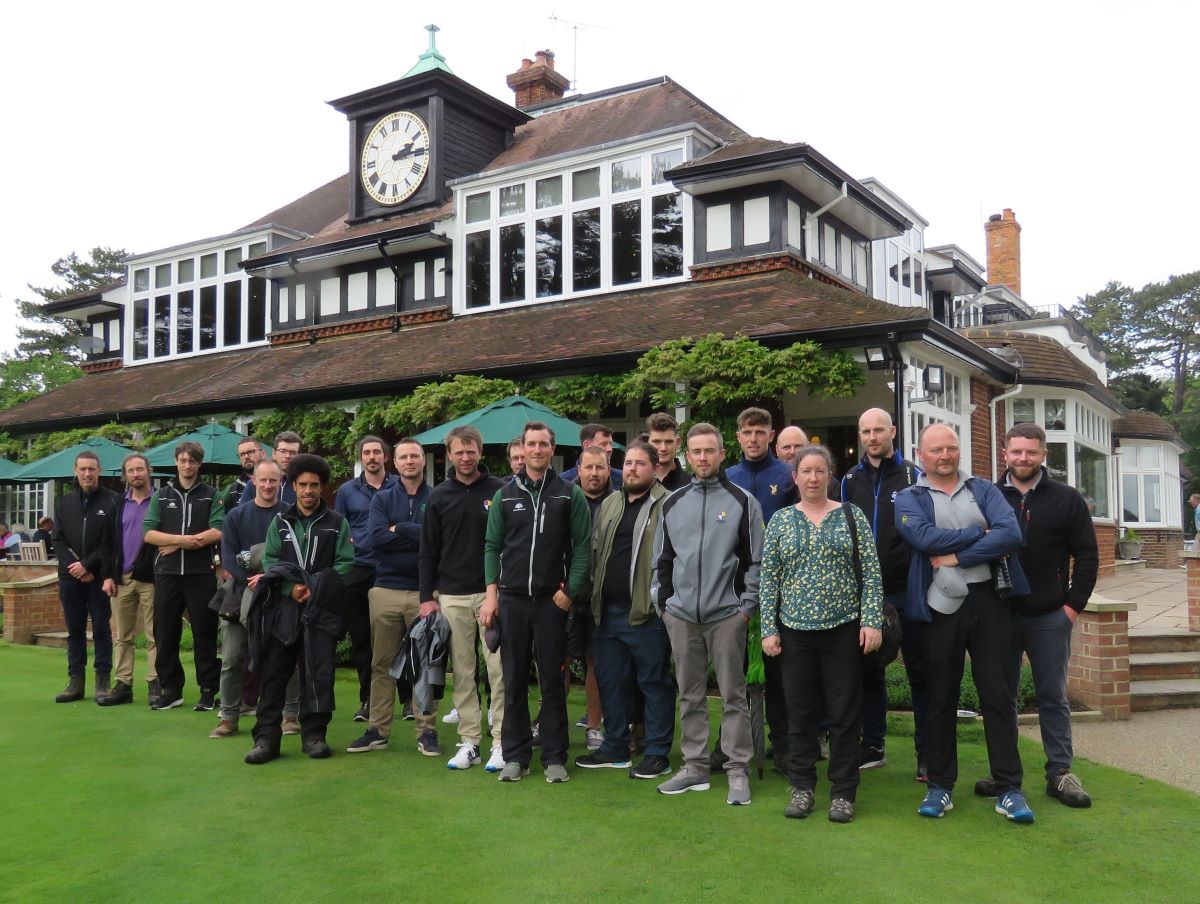- Homepage
- News and Features
- Creating a network for nature at Sunningdale
Creating a network for nature at Sunningdale
Together, Sunningdale’s two heathland courses may represent the best of inland golf in the UK and yet, when Greenkeeper International joined the South East Section for a look around last summer, we barely saw a fairway.
Instead, Courses & Estate Manager Jamie Wilson took us into the deep rough to show the vital role even the most prestigious of golf clubs can play in protecting the UK’s valuable biodiversity.

As experts warn of an ecological crisis and wildlife populations plummet, the potential for golf courses to play a role in turning the tide is becoming more widely understood. Where environmental bodies once looked upon courses with a sceptical eye, today’s course manager has a greater understanding of the need to manage areas of the landscape that aren’t tightly mown.
Surrey’s famous sand belt is home to many of England’s finest inland golf courses and together they represent 3% of the entire landmass of the county – 5,645 hectares of open greenspace. That’s approximately the same amount of land as managed by Surrey Wildlife Trust, giving an indication of just how important golf courses can be.
“I’m not a golfer, but I love the fact we have so many golf courses in Surrey,” said Ben Habgood, Thames Basin conservation manager at the wildlife trust. “Wildlife and people come together on golf courses every day, whether you know about it or not.”
Whether due to natural causes or pressures placed upon the environment by human activity, golf courses are well placed to play a role in nature’s recovery. At Sunningdale, a heathland restoration project has been underway for over 15 years, with Jamie and his team removing large areas of self-seeded pine woodland and creating soil scrapes through which dormant heather will hopefully regrow. Lowland heathland is a rare habitat that is home to various ground-nesting birds and rare species of invertebrates, reptiles and mammals. Examples include woodlark, Dartford warbler, dormouse, silver studded blue and grayling butterflies and smooth snakes. At Sunningdale there’s a thriving population of sand lizards and golf courses in Surrey are home to all six of the UK’s native reptile species.
“Having a climate resilient landscape is important and these days golfers expect to see wildlife when they tee off,” said Ben. “If you tap into that, it can be a really helpful resource.”

Once a heathland conservation tree felling licence was obtained at Sunningdale, the team selected various locations around the site and began removing trees. The dense pine woodlands offered poor habitat for ground dwelling species, while it also blocked large amounts of sunlight through much of the year, making it difficult to maintain playing surfaces.
After the trees and stumps were removed, an excavator was called in to remove the pine mulch, which could be up to a foot thick in places with centuries of pine needles piling on top of each other and preventing anything else from growing through it.
“You have to have an excavator operator who is very skilled, because you have to remove the pine mulch without disturbing the soil too much,” said Jamie. “If you take too much or not enough soil off, it might not work.
“One thing you’ve got to consider is, is there going to be a viable seedbed? It costs a lot of money to bring excavators in here and start scraping, so I’m not about to ask the club to spend money if there’s no chance of heather. Hopefully, within two or three years we’ll start to see that regeneration but sometimes you must be extremely patient with it and there are areas where I’ve waited for five years and you can just start to see the seedlings coming through.”
Heather seeds can lay dormant in soil for up to 50 years, so the removal of the pine mulch and trees gives these the opportunity to begin growing.
“This is nothing to do with golf,” Jamie added. “This is purely to maintain the balance between woodland and heather. We want to help pollinators and improve biodiversity so we are always trying to balance all the different types of habitats and vegetation, so it’s constantly evolving and being managed.”
For Ben, a golf course forms part of the wider landscape, creating a larger ‘Nature Recovery Network’ that supports the activities of wildlife reserves operated by the wildlife trusts. Any land manager, from the team at Sunningdale through to your everyday gardener, can play a role in providing habitat corridors that enable wildlife to move and populations to interact.

A third of Surrey’s wildlife species are extinct or in decline, while hedgehog populations have halved. Forty-one per cent of insects are threatened with extinction and these are all down to pollution, fragmented habitats and land management changes.
Dr Marie Athorn of the RSPB, who collaborates with The R&A, has estimated that over 60% of golf course land could be well managed for nature, while an England Golf and Greenergolf survey has indicated the average club could save £30,000 per year by having more sustainable, nature friendly practices.
The Sunningdale estate covers around 300 hectares (750 acres), but only half of that is golf course. The land includes a Site of Special Scientific Interest (SSSI) for rare heathland habitat, it is part of the Thames Basin Heaths Special Protection Area for EU protected heathland bird species and has worked with the Amphibian and Reptile Conservation Trust since 1987, reintroducing rare reptile species.
Jamie said: “There are mixed feelings among most memberships on the subject of trees. But if you can communicate these thoughts and ideas in the right way, with the right data and the right information, members understand the benefits and tend to be supportive. The problems come when you’re not sharing your plans and the intended positive outcomes. Whenever we do this type of work, we go through quite a standard process, which can take a little time, but it’s so important because you must get the buy-in and members should feel comfortable and happy with your plans.
“Trees are a tricky one and I must admit we’ve had some interesting debates over the years at committee level, but generally they understand the importance of the heathland environment and what we’re trying to achieve alongside having two wonderful golf courses.”
Key to the continuing success at Sunningdale is the implementation of a management plan for the site, explained Jamie, adding: “It’s really important to have these documents because it makes the whole system move forward all the time. If I was to leave tomorrow, the next person coming in would know what’s happened over the last 30 years and we’d be able to continue what’s been done using the policy document that we’ve created.”
Across the site, heather areas have increased by about 40%. Key to the project is that the Sunningdale team hasn’t been working alone and the collaboration with wildlife trusts and other conservation groups have allowed the experts on all sides to get on with what they’re good at.

“Greenkeepers are already doing a great job,” said Ben. “A golf course is a huge asset that is doing an incredible amount of work for your local ecosystem and it is the out of play areas, those scruffy edges that you don’t know what to do with, that are the bits we’re really interested in.
“The really good thing at Sunningdale is that you’ve got a landowner who is really switched on and they get expert help in as well, so the greenkeepers can focus on the golf course and the experts can focus on the habitats. There are so many species out here, including the rare reptiles that are supported by the habitat management.
“You never want to get rid of everything and you want a mosaic. Sunningdale has exquisite lowland heathland habitat and it is all in the context of a golf course.”
Ben is also keen to promote the financial aid that is available to golf clubs who are looking to undertake conservation work and habitat creation. By starting conversations with local wildlife groups, revenue streams can be opened that will support your golf club’s ambitions.

“We’re all connected in some way, you’re not just sat on your own and isolated,” said Ben. “These habitats all talk to each other and it’s that complete cycle that we’re looking for. We’re giving wildlife an opportunity to jump from one to the other so if one disappeared for whatever reason, there are others to support it.
“If you know what’s on your golf course, you can make informed decisions about the management that you deliver on your site. Just walking across here I heard a woodlark, a European protected species that was singing within a few feet of golfers. That’s symbolic of how successful you can be, going from a nature reserve to a golf course and onwards.”

Author

Karl Hansell
Karl has been head of communications for BIGGA since March 2016. His duties include editing the monthly Greenkeeper International magazine, in addition to other communications activities for the association.
